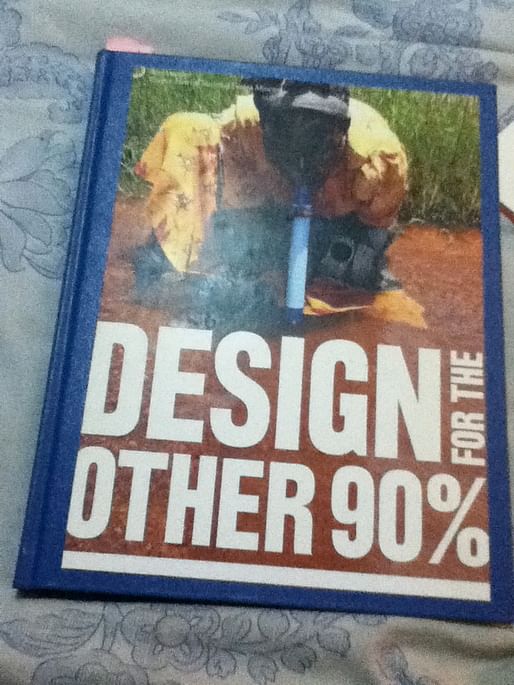
Oct '11 - May '13
Light readings in which I found useful quotes that I can share, in order to polish my spilled thoughts on this blog clearer.
I'm quoting two books for this post:

1. Non Intentional Design, by Uta Brandes and Michael Erlhoff. daab, 2006.
“Subversive: to generate new methods, known as pathways, by means of quicker or cleverer, perhaps more attractive shortcuts.”
“Children are world champions at changing the function of all conceivable objects for their own joy and play; though they only ever do his to satisfy the moment, not the future.”
“The chair, one of the most frequently designed and redesigned objects: inventing diverse new functions through usage.”
“Take nothing for granted but perceive the possibility for change in everything.”

2. Design for the Other 90%, exhibition catalogue. Cooper-Hewitt, National Design Museum, Smithsonian Organization, 2007.
(Please also see Design Observer's coverage of the continuation of this exhibition, Design with the Other 90%: CITIES, here and here.)
Paul R. Polak (IDE):
“1. If you haven't had good conversations with your eyes open with at least 25 poor people before you start designing, don't bother.
2. If what you design won't at least pay for itself in the first year, don't bother.
3. If you don't think you can sell at least a million units at an unsubsidized price, to poor customers after the design process is over, don't bother.”
Martin J. Fisher:
“Avoid giveaways—create dignity, not dependence.”
“Measure the impact of what you do.”
Sheila Kennedy:
“Material misuse… a creative amnesia which allows ‘ordinary’ technology components to be reimagined in different pieces, packages, relationships.”
John Peterson:
“[Modernism] inclination to the social responsibility of architecture was correct, but their belief in the ability of architecture to resolve these immense issues on its own was not. The subsequent [60's & 70's] participatory approach to design did not fail because of the inclusion of a public voice, but because the designers ceded their own voice—and thus their expertise—in favor of compromise, and because of a misguided interpretation of professional service.”
A school blog on Arch Dept, Cranbrook Academy of Art. By farid rakun, admitted Fall 2011.
No Comments
Block this user
Are you sure you want to block this user and hide all related comments throughout the site?
Archinect
This is your first comment on Archinect. Your comment will be visible once approved.